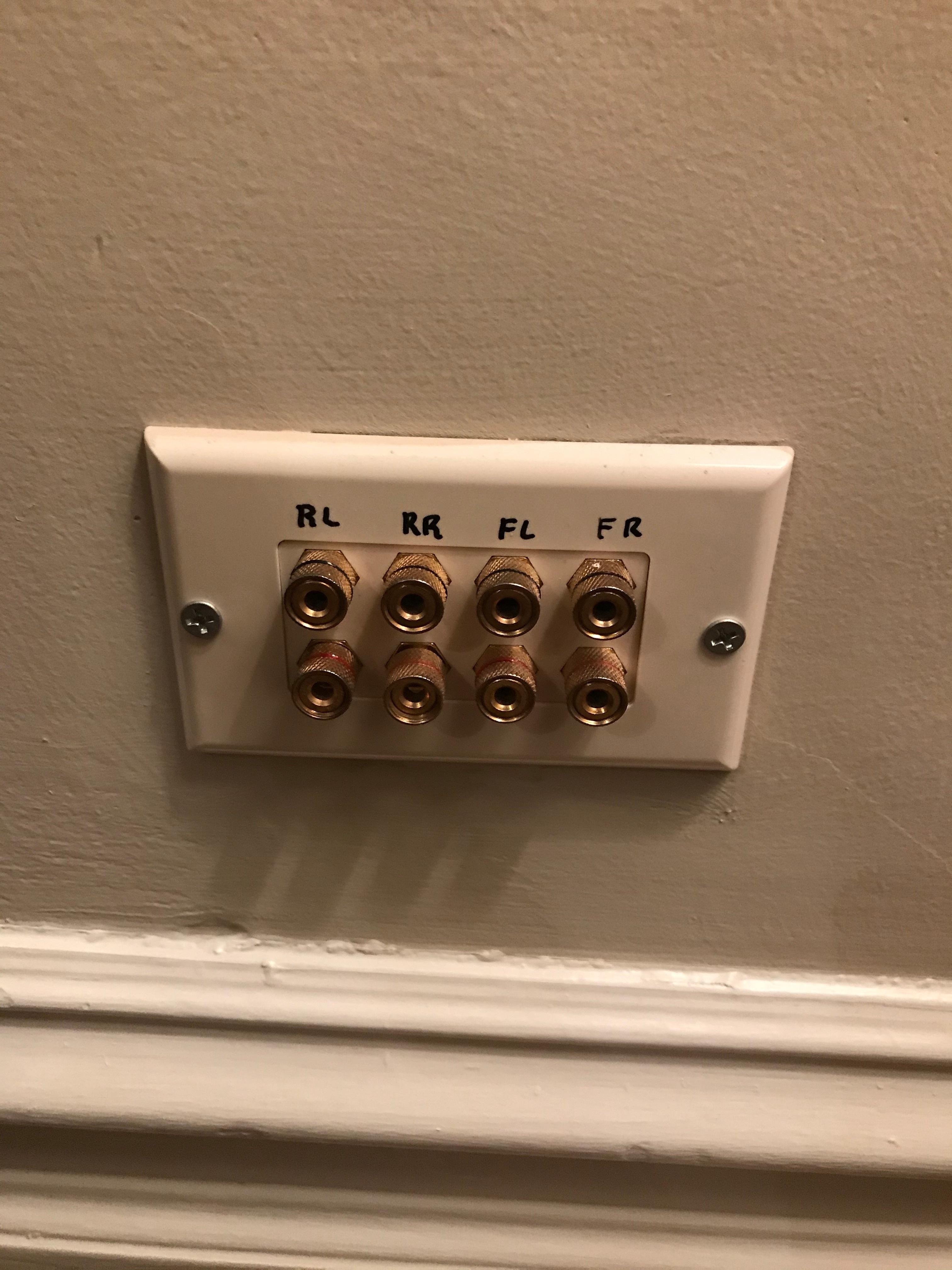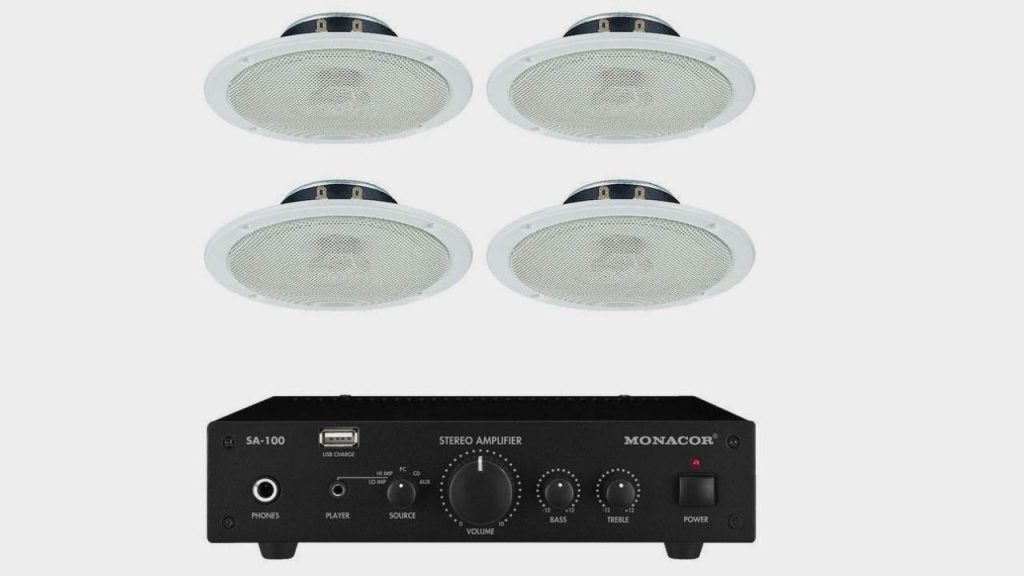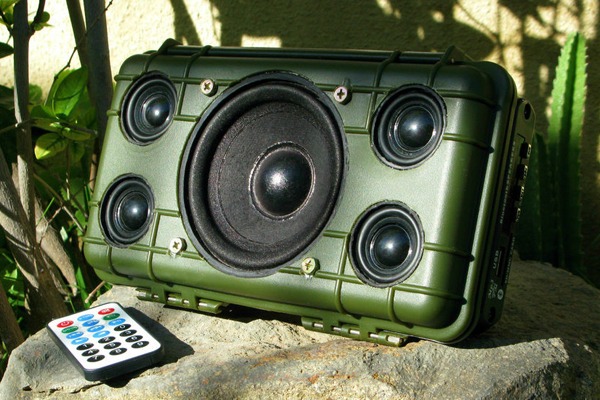How to Connect Ceiling Speakers to Amplifiers?
There are a few ways to connect ceiling speakers to amplifiers, and the best method depends on the specific equipment you have. If you have an A/V receiver with pre-amp outputs, you can use speaker wire to connect the receiver’s front left and right pre-out channels directly to the ceiling speaker’s binding posts. If your amplifier doesn’t have pre-amp outputs, or if you’re using a powered subwoofer with its own amplifier, you’ll need to use an RCA y-cable adapter to connect the amplifier’s left and right channel outputs to the ceiling speaker.
- Remove the speaker grille and unscrew the speakers from the ceiling
- Cut off any excess wire from the speaker leads, leaving about 6 inches of wire
- Strip ½ inch of insulation from the end of each lead wire
- Connect the positive (red) lead wire to the red binding post on the amplifier, and connect the negative (black) lead wire to the black binding post on the amplifier
- Make sure that both connections are tight
- screw The Speakers back up into The Ceiling
- Put The Grilles Back On

Credit: en.community.sonos.com
How Do I Wire My Ceiling Speakers to My Receiver?
Assuming you would like a step-by-step guide on how to wire your ceiling speakers to your receiver:
1. Begin by running the speaker wire from the location of your receiver to the location of your ceiling speakers.
2. Next, use a drill to make holes in the ceiling where you will be mounting the speakers.
3. Use screws or nails to secure the brackets that come with your speakers into the holes.
4. Hang your speakers from the brackets and then twist on the caps (or whatever type of connector is provided) until they are tight.
5. Connect one end of each speaker wire to the positive terminal of each speaker, and then connect the other end of each speaker wire to the negative terminals of both speakers (this will create a daisy chain).
6. Finally, plug your receiver into an outlet and power it on.
Do Ceiling Speakers Need Amplifier?
Ceiling speakers are a great way to add audio to any room, but many people wonder if they need an amplifier. The answer is yes and no. It all depends on the size of the room and how much power you need.
If you have a small room, then you probably won’t need an amplifier. However, if you have a large room or want to crank up the volume, then you will definitely need an amplifier. There are many different types of amplifiers on the market, so make sure to do your research before purchasing one.
What Do I Need to Connect to My Ceiling Speakers?
Assuming you would like a detailed answer on connecting ceiling speakers: You will need several things in order to connect your ceiling speakers. Most importantly, you will need a speaker wire and an amplifier or receiver.
You will also need brackets to mount the speakers if they are not already mounted. If you have never worked with audio equipment before, it might be a good idea to consult with someone who has. This person can help you choose the right size amplifier or receiver for your needs as well as choose the type of speaker wire that is best for your system.
Once you have all of your equipment, you will need to run the speaker wire from the amplifier or receiver to the ceiling speakers. If your system is not battery-operated, you will also need to run an AC power cord to the amplifier or receiver. After everything is hooked up and plugged in, turn on your amplifier or receiver and test out your new ceiling speakers!
How Do I Connect Multiple Speakers to My Amp?

If you have a home theater or other audio system that includes multiple speakers, you may be wondering how to connect them all to your amplifier. The good news is that it’s not as difficult as you might think. In this article, we’ll show you how to connect multiple speakers to your amp using both wired and wireless methods.
Wired Connections The most straightforward way to connect multiple speakers to an amplifier is with wires. This method is typically used for surround sound systems in which all of the speakers are located in the same room as the amplifier.
To make the connections, you’ll need speaker wire and banana plugs (optional but recommended). Begin by connecting one end of the speaker wire to the appropriate output on your amplifier. If you’re using banana plugs, insert them into the binding post outputs on your amp before attaching the speaker wire.
Then run the speaker wire to each of your speakers, making sure to keep track of which wire goes to which speaker. At each speaker, strip away a small portion of insulation from the end of each wire and twist the exposed copper strands together before attaching them to the binding posts or spring clips on your speaker. If your amplifier has A and B channels, you can use this method to connect two sets of speakers – one set per channel.
Just be sure that each set of wires is connected to its own channel on the amp (i.e., don’t mix up left and right). Wireless Connections Another option for connecting multiple speakers to an amplifier is via a wireless connection.
This can be useful if you want to place speakers in different rooms without having to run long lengths of speaker wire through your house. There are a few different ways to do this: – Use a wireless transmitter/receiver system that connects between your amplifier’s output and input jacks – Use an amplified Bluetooth receiver that connects directly to your amp’s input jack – Use a Sonos Connect device (if compatible with your existing stereo equipment) – Use Apple AirPlay (if compatible with your existing stereo equipment) Each of these methods has its own pros and cons, so it’s worth doing some research beforehand to see which would work best for your particular setup.
How to connect T-105U CEILING SPEAKER to BROW BT-45EUB amplifier
Amplifier for Ceiling Speakers
Are you looking for an amplifier for your ceiling speakers? If so, you’ve come to the right place! In this blog post, we’ll go over everything you need to know about choosing the right amplifier for your ceiling speakers.
We’ll cover topics such as power output, speaker impedance, and more. By the end of this post, you should have a good understanding of what factors to consider when choosing an amplifier for your ceiling speakers. When choosing an amplifier for your ceiling speakers, one of the most important factors to consider is power output.
You’ll want to make sure that the amplifier can provide enough power to drive your ceiling speakers. The amount of power required will vary depending on the type and size of your ceiling speakers. Another factor to consider is speaker impedance.
Most ceiling speakers have an impedance of 8 ohms or higher. Be sure to check the specs of your particular model before making a purchase. In addition to power output and speaker impedance, there are a few other things to keep in mind when selecting an amplifier for your ceiling speakers.
Make sure that the amp has high-quality inputs and outputs, as well as adequate ventilation cooling. It’s also important to choose an amp that includes features such as bass and treble controls, loudness compensation, and protection against short circuits and thermal overloads. By taking all of these factors into consideration, you can be sure that you’re choosing the best possible amplifier for your needs!

Conclusion
If you want to add ceiling speakers to your home theater or audio setup, you’ll need to connect them to an amplifier. This can be done by running speaker wire from the amplifier to the speakers, or by using a wireless system. Whichever method you choose, make sure that the connections are secure and that the speakers are properly positioned before turning on the power.






